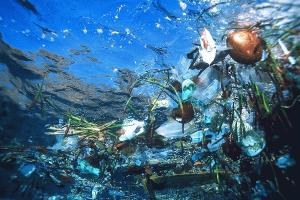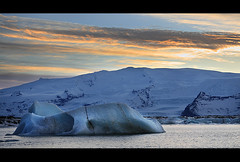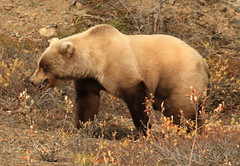Sometimes it’s easy to forget just how large of an impact mankind has on the earth – all the  more so when we’re talking about the ocean.But we do have an effect. Take, for instance, the massive patches of floating garbage that are drifting in the oceans, trapped in ocean conveyors and vortexes (we’re talking hundreds of millions of tons of trash). Via The Daily Galaxy:
more so when we’re talking about the ocean.But we do have an effect. Take, for instance, the massive patches of floating garbage that are drifting in the oceans, trapped in ocean conveyors and vortexes (we’re talking hundreds of millions of tons of trash). Via The Daily Galaxy:
Ocean currents have collected massive amounts of garbage into a sort of
plastic “soup” where countless bits of discarded plastic float
intertwined just beneath the surface. Indeed, the human race has really
made its mark. One enormous plastic patch is estimated to weigh over 3
million tons altogether and cover an area roughly twice the size of
Texas.
[…]The trash collects in this remote area, known as the North Pacific
Gyre, due to a clockwise trade wind that encircles the Pacific Rim.
According to Moore the trash accumulates the same way bubbles clump at
the center of hot tub.Ian Kiernan, the Australian founder of Clean Up the World, started
his environmental campaign two decades ago after being shocked by the
incredible amount of rubbish he saw on an around-the-world solo yacht
race. He’ll says he’ll never be able the wipe the atrocious site from
his memory.“It was just filled with things like furniture, fridges, plastic
containers, cigarette lighters, plastic bottles, light globes,
televisions and fishing nets,” Kiernan says. “It’s all so durable it
floats. It’s just a major problem.”
Read more here.

![Reblog this post [with Zemanta]](http://img.zemanta.com/reblog_e.png?x-id=08c87dba-5e54-474c-9977-44cc961934be)

![Reblog this post [with Zemanta]](http://img.zemanta.com/reblog_e.png?x-id=c1d9b3d0-e6fd-4376-8950-bec5364b1bc5)

![Reblog this post [with Zemanta]](http://img.zemanta.com/reblog_e.png?x-id=62ed7fef-5a9a-4336-8057-6eb3bdd99b16)

